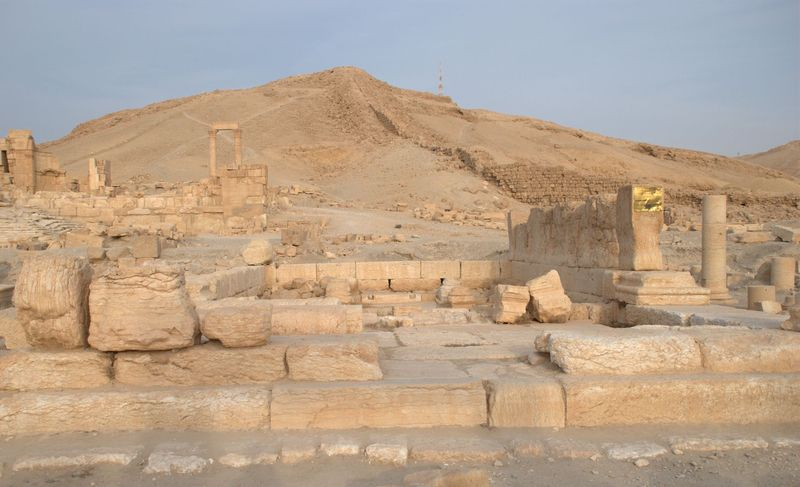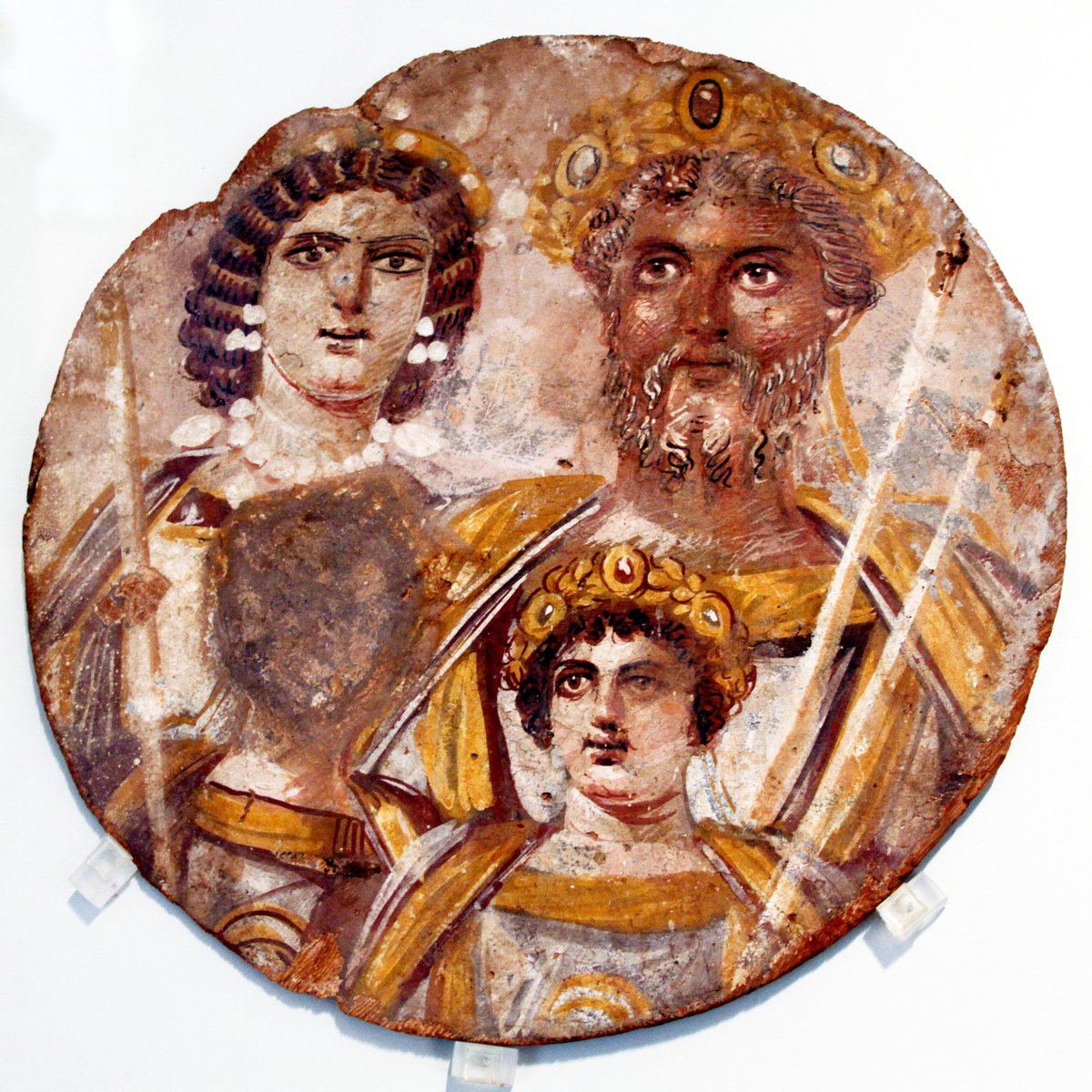The shrine of Allat-Athena at Palmyra in the Provincia Arabia was ritually destroyed during the campaign of Maternus Cynegius, the Praetorian Prefect of Oriens, against pagan temples of the East between 25 May 385 and 19 March 388.
The temple, dedicated between 123-164 CE by a certain Taimarsū, a citizen of Palmyra, has the shape of a rectangle with a colonnaded porch, facing a main street of the city's center. This temple of Allat-Athena has two striking features.
Firstly, the positioning of the altar within the temple's walls required indoor sacrifice, the meat from which would have been distributed to and consumed by persons sitting on surrounding benches.
This would have permitted the offering of clandestine sacrifice, away from the public gaze, during the 380’s, after the prohibitive laws on that subject given by Theodosius I.
The statue of the goddess Allat, reassembled from the fragments, corresponds to a type of Athena found in Athens in the fifth century B .C., although Allat turns up occasionally as the equivalent of the Greek Artemis.
The feet of a baldaschino which stood over the effigy of Allat are still in situ. This interior architectural device was later used in Christian churches to cover the altar table or depository of martyr relics.
The second feature is the abandonment of the fragments of the statue within the temple itself. From the available pieces it proved possible for the excavators to demonstrate the sequence of blows which the image received as Cynegius' agents ransacked the interior of the building.
The statue was first decapitated with a blow behind the head. The face was then smashed intoseveral pieces so dexterously that no fragments survive of the central portion of the face.
The partly mutilated torso was then deposited behind the baldaschino. The decapitation and obliteration of the goddess' facial features constituted a sort of “symbolic annihilation of personality" in order to drive out the daimon inhabiting the image.
This ritual desecration is somewhat like the expulsion of the genius of the emperor thought to reside in imperial imagery in a formal damnatio memoriae.
The top of the altar was cut off, dumped behind the cella, and later covered with debris, undoubtedly to prevent further sacrifices to Allat-Athena.
The missing element in these various acts of destruction is the incision of Christian crosses and other symbols on the statuary, altar, and walls of the building (examples here, from other sites).
This circumstance suggests that officials acting under orders performed the despoliation, rather than zealous laymen or monks.
Palmyra certainly had a Christian community before 388-392, its bishop Marinus having participated in the Council of Nicaea in 325. Two three-aisled early Christian basilicas, constructed from reused building materials, date from no earlier than the fourth century.
Neither the bishop nor the civil government had any further use for this particular temple of Allat-Athena, but in the latter half of the fifth century converted two other temples of Palmyra: the small temenos of Baal-Shamin and the old shrine of Bel (below) into churches.
This written thread content adapted from:
J. Trombley, Hellenic Religion and Christianization c. 370-529, Volume 2
J. Trombley, Hellenic Religion and Christianization c. 370-529, Volume 2
(The Allat-Athena effigy, as well as the Bal temple-turned-Christian church, were both ritually destroyed by ISIS in 2015.)

 Read on Twitter
Read on Twitter


















